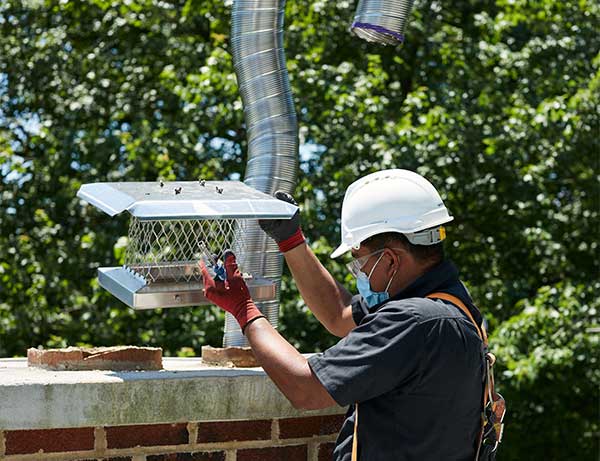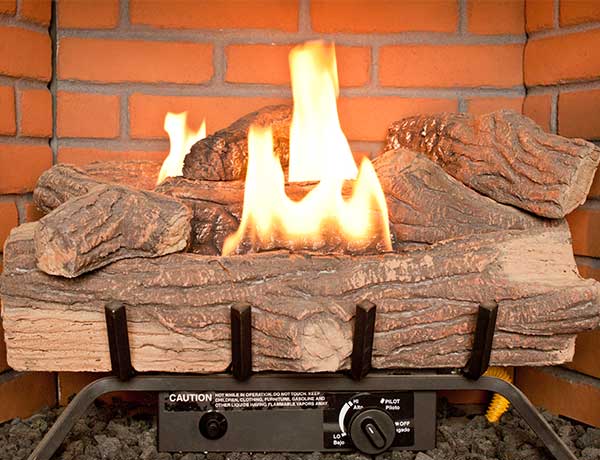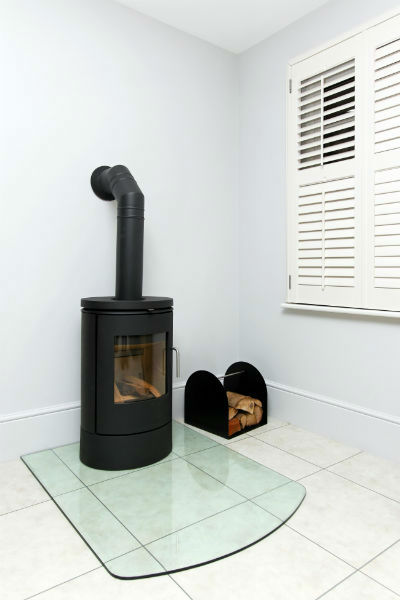Check Out Our Chimney Inspection Checklist
If you’ve owned a fireplace for some time, then you know how important booking your annual chimney inspection is. These services give certified sweeps the opportunity to do a thorough overview and either deem your system safe for use or declare the need for further sweepings, maintenance, or repairs.
All that said, most of the time homeowners have no idea what we are actually looking at or looking for when we conduct a chimney inspection. So Winston’s Chimney Service has put together a chimney inspection checklist, so you know just what we look at when we’re examining your system – and why.
To get an inspection on the books soon, call Winston’s Chimney Service at 703-379-5006 or schedule online with us. We’d be happy to hear from you.
The Exterior Chimney Inspection Process
The exterior chimney inspection is everything that you can see both from the ground outside, as well as from the roof close to the chimney. Here’s what we’ll do.
- Check the chimney crown: The crown sits on top of the part of the chimney structure coming out of your roof. If left unprotected, it suffers a lot of weather damage making it a prime target for cracking and deterioration over time. So, during a chimney inspection, we are looking to make sure it’s not cracked, flaked, broken, or missing altogether.
- Check the chimney chase cover: A chimney chase cover serves as a crown for factory-built fireplaces (also often referred to as prefab fireplaces). It is made of metal and we are looking to make sure it’s not rusted out, split, or missing.
- Check the chimney cap: The chimney cap sits at the top of the flue to keep rain and debris out of the venting system. Sometimes they have screens to keep animals and birds out of the flue as well. We look to see the overall condition of the cap, and make sure it is still there and secured firmly.
- Check if there is a top lock damper: There are a couple of types of top lock dampers that sit at the top of the flue. We will check to make sure yours is still working correctly and that the seals around the edges are still good. They should shut tight as the mechanism closes.
- Check the chimney structure: The chimney structure is considered the entire height, length, and width of the chimney. It can be brick, stone, stucco, siding, or shingles. We are looking for signs of damage, such as cracks, missing mortar joints (if it’s brick or stone), peeling or flaking, splits, and water intrusion. Is it leaning? Are there signs of water damage like efflorescence, staining, etc? We’ll check for it all.
- Inspect the flashing: Flashing is material normally made of metal that is attached around the base of your chimney. It seals up tight to keep water from leaking into your home from this notoriously vulnerable area where the roof meets the chimney. We check to make sure it is still secure and properly sealed to the base of the chimney – and does not have any soft or rotted-out spots.
The Interior Chimney Inspection Process
The interior of your chimney system is made up of some things you can see and some things you can’t. This is why we use cameras to look up through the flue and smoke chamber. Sometimes, we even use infrared technology to see into the walls, without having to tear them down in the process.
Here’s what you can expect from us when we inspect your interior system.
- Inspect the flue lining: Flue liners are made up of different materials so we are looking for different things depending on the materials.
-
- Terracotta chimney flue tiles: Chimney technicians look for cracks, gaps, or other damage that could allow smoke or other gases, such as carbon monoxide, to enter your home.
- Aluminum flue liner: Aluminum liners are not warranted for lifetime use and can get tears or come open at the seams. With these, we’ll be looking to make sure they are still viable and can effectively protect your system.
-
- Check for creosote buildup: Creosote buildup is one of the major things we will be looking for, as it can be both harmful to your health and a very combustible substance that can damage your flue. For both of these reasons, when found, it will need to be removed – and quickly.
- Check the damper: If the unit is equipped with a throat damper (and not a top lock damper), then we will make sure it is working properly. It should open and close smoothly and tightly, guaranteeing you lasting protection when your system is not in use – and easy airflow pathways when it is.
- Check the smoke chamber and smoke shelf: The smoke shelf is right on the other side of the damper and leads the smoke that is vented up from the firebox and into the smoke chamber. We’ll make sure there is no debris on the smoke shelf, as it’s a favorite place for some animals to make a home. We’ll also make sure the smoke chamber is parged correctly in order for the smoke to easily rise up and out of the system.
- Check for signs of water damage: While most people think fire is the number one thing that causes damage to the chimney, the truth is – it’s water. So we take water very seriously when inspecting and assessing a chimney system. Water can cause rust, corrosion, or deterioration to the interior of the chimney, and especially anywhere where there are metal parts. If there are signs of water intrusion or damage, action for repairs will need to take place.
- Perform a firebox inspection: The firebox is where the fire is actually built and burns. We’ll inspect the firebox walls, sides, and surrounding bricks, looking for cracks, missing mortar, flaking, or any other signs of damage.
- Check on the refractory panels: Refractory panels look like brick but are really ceramic panels that come with factory-built fireplaces. Over time and with extreme heat they often crack. We look for signs of cracking, chipping, and peeling.
- Check the hearth: Many people think the hearth is just another name for the fireplace. However, the hearth is the name for the floor inside the fireplace, as well as the surrounding floor outside of the fireplace. It should extend at least 16 inches from the front of the firebox and 8 inches beyond each side. We will check and make sure the hearth meets the standards it is supposed to.
The Venting System Inspection Process
When we inspect a homeowner’s venting system, there is some overlap between the exterior and interior inspections. This is normally done when there are draft issues being experienced by the homeowner. This can include issues like the fire not staying lit or maybe they feel a breeze coming out of the fireplace. Even smells and foul odors can indicate draft problems within the fireplace.
In these cases, here’s the first steps we’ll take.
- Inspect the chimney cap: We touched on the chimney cap above, but if draft issues are present, this is definitely an area we’ll need to look over. Chimney caps can play a big role in reducing downdrafts, so having one correctly installed and fitted can make a big impact.
- Check for proper clearances: In order for a chimney to draft well – and also vent properly – it should be at least 3 feet taller than any structure within 10 feet of it.
- Check for proper chimney liner installation: If the liner is either not big enough or if it’s too big for the unit, the draft will be off. We can check the venting system and the size and installation of the liner to make sure it’s properly installed and free of any obstructions or damage.
- Perform a combustion air inspection: For the chimney and venting system to work properly, it has to have enough air. We can do pressure tests and check the combustion air supply, making sure the liner was properly sized and free from any blockages throughout the entire process.
The Gas Fireplace Inspection Process
Techs at Winston’s Chimney are National Fireplace Institute (NFI) gas-certified installers and have all the qualifications to check gas lines and connectors, as well as install any gas appliances, including gas logs. And if you have a gas system, it should be inspected on an annual basis. Here’s what you can expect when you hire us for the job.
- Complete a gas line inspection: Inspecting all of the gas lines and connections to your gas fireplace is a must for ensuring safer and more efficient functioning. Avoid potential gas leaks by allowing our tech to take a look before every burning season.
- Check for gas leaks: We use the latest technology to test for leaks or other issues in and around your gas fireplace or appliance. It could be that you have a slow leak that’s making family members ill and slowly deteriorating their health.
- Check the pilot light and flame: We will make sure the pilot light and flame are properly adjusted and burning blue. And if they aren’t, we can suggest appropriate next steps for getting your system where it needs to be.
- Check the remote batteries: Sometimes, gas fireplace issues are as simple as changing the batteries in your remote – and we feel it’s always worth checking! We will change out the remote associated with the gas fireplace, so it’ll definitely work when you need it to.
The Wood Stove Inspection Process
While some might incorrectly assume gas systems don’t need regular maintenance, it’s always been very clear that wood stoves should be annually inspected. Get your maintenance booked now, so we can complete the following important steps, in addition to many of the other ones we’ve covered above.
- Inspect the stove and surrounding area: As we inspect your wood stove, we will ensure it has proper clearances from combustibles and that the entire system is properly installed and working correctly.
- Check the stovepipe and chimney: Just like on a chimney flue, we will make sure the stovepipe and chimney are free from blockages and properly installed. This guarantee good airflow as well as minimizes your risk of fires or gas leaks.
Ready to Get Your Next Inspection On the Books?
Whether your burning season is approaching fast or still a few months away, we want to be the team you hire for your next chimney inspection. We complete thorough overviews of any fireplace, stove, insert, or oil flue – no matter the style or fuel type. If you’re looking for the highest level of care possible in the Northern Virginia area, we’re the crew to call on.
Call the Winston’s Chimney Service crew at 703-379-5006 to get started, or you can schedule here on the website today. We can’t wait to prove ourselves to you.
We have tips for finding chimney inspections near you. We always want you to get the best chimney and fireplace inspection possible.




